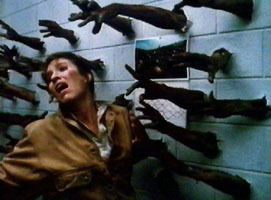

This text is based on a talk that I did as a representative of the Hammer House of Horror, at Public Netbase, Vienna. Ideas in it were subsequently integrated into a conceptual framework developed by the Association of Autonomous Astronauts, as part of their exploration of 'exit strategies'.
All the ideas in this text are still open to discussion and development. Indeed, the concept of a 'zombie culture' is in itself open to criticism, and perhaps some possible elaboration - it could too easily be used to fabricate another version of the (rather too smug) 'capitalist culture as spectacle' model, and this was NOT my intention. So, please read this with a very critical mind - take and use it for your own purposes...
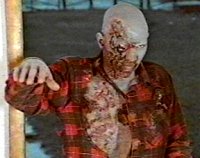
Hello.
I intend to describe to you some very reliable anti-zombiefication techniques. These are going to be referred to as: COLLECTIVE PHANTOMS; MEDIA INVASIONS; SPECULATIVE PLAYGROUNDS; PSYCHOGEOGRAPHICAL TOURS and finally FUNK THEMES.
First of all let me put into context what I mean by the terms ZOMBIE CULTURE and VAMPIRE MANAGEMENT. This is the theoretical bit so try and concentrate.
Earlier phases in the establishment of zombie culture consolidated the imposition of discipline and subordination to Vampire exploitation. We were forced into technological and material dependence on Zombie Culture, which was actually preparing the way for zombiefication as we know it today. Now Zombie Culture is inscribed into the actual processes of our minds and even within our own imaginations. Zombiefication, and the establishment of Zombie Culture, operates as an elaborate programme of mind invasion supervised by Vampire Management (a true history of how the Vampire Management established its power and set about creating Zombie Culture will have to be discussed in a separate presentation).
Zombiefication can be regarded as a complex process of manipulation and aims at implanting specific forms of ideology into our minds, to ensure that we think and act in accordance with the dictates of Zombie Culture. Zombie Culture is not only designed to ensure that zombies are sufficiently diverted from pursuing liberatory projects, zombiefication actually enables the Vampire Management to feed off of our collective psychic energies.
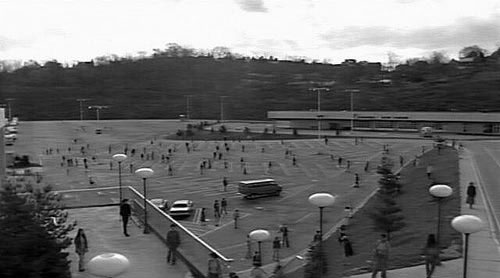
They want your intelligence, your psychic energies. So the techniques that I describe here are all concerned with how we can use our intelligences to resist Zombie Culture - this is what we are now concerned with.
Actually, one of the weapons to help us in this fight is the collective intelligence of all the activities that are subordinated to Zombie Culture. This Zombie Knowledge is a collective pool of power, one that is both subordinated to Vampire Management, but that can also be dived into by anyone in order to discover ways of resisting zombiefication. Looking at Zombie Knowledge from this perspective allows us to understand the collective nature of all cultural production, and how anyone has the potential to build their own forms of cultural sabotage and psychic assaults against Zombie Culture.
It is one of the paradoxes of the Zombie Nation that anti-zombie behaviour is present as an immanent force in everyone.
Ok, so let's now look at these anti-zombiefication techniques in more detail.
The first anti-zombiefication technique that we will examine is the use made of collective phantoms. A collective phantom is essentially a multiple identity, a name that anyone can use and that therefore has multiple uses and users. But I want to immediately differentiate between the terms 'multiple name' and 'collective phantom'. I want to suggest that the former tends to operate within an art context, and has been used to question notions of individuality and originality. We can think of examples like the Neoists' use of the multiple name Monty Cantsin, and then following that the name Karen Elliot which was associated with various avant-garde activities throughout the 80s. Before this there was the multiple identity Claus Oldenburg used by mail artists in the 70s, and we can even go as far back as the Berlin Dadaists and their use of the name Jesus Christ.
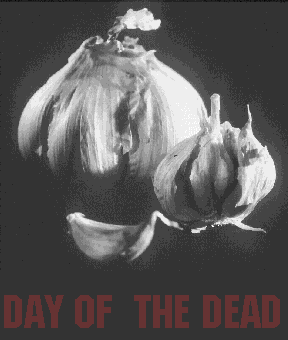 Unlike
a multiple name that is restricted to art practices, a collective phantom operates
within the wider context of popular culture, and is used as a tool for class
war. In fact, collective phantoms have been used for years before any artist
dreamt up any multiple name concept - think of, for example, the name General
Ludd, which was connected with a series of conflicts in the North of England,
in the textile manufacturing industry, at the beginning of the 19th Century.
These involved highly organised groups attacking and destroying the newly installed
factory-based machines. These Luddites were not simply opposed to technology.
They understood that what was really at issue was the freedom of the Vampire
Management to destroy traditional customs, whether by new machinery, the factory
system or the free market.
Unlike
a multiple name that is restricted to art practices, a collective phantom operates
within the wider context of popular culture, and is used as a tool for class
war. In fact, collective phantoms have been used for years before any artist
dreamt up any multiple name concept - think of, for example, the name General
Ludd, which was connected with a series of conflicts in the North of England,
in the textile manufacturing industry, at the beginning of the 19th Century.
These involved highly organised groups attacking and destroying the newly installed
factory-based machines. These Luddites were not simply opposed to technology.
They understood that what was really at issue was the freedom of the Vampire
Management to destroy traditional customs, whether by new machinery, the factory
system or the free market.
When these Luddites issues their communiques and manifestos, or sent threatening letters to their enemies, they signed them as General Ludd. General Ludd was the collective phantom that led them into battle, who issued the orders and taunted the rich, as when a factory owner was greeted in the streets with cries of "I'm General Ludd".
General Ludd was used as a strategy for resistance during a period of transitional conflict. In a comparable way, a present-day collective phantom, called Boris Karloff, has also arrived at a moment of transitional conflict. Whilst Vampire Management continues its efforts at reinforcing global capitalism, Boris Karloff expresses the new antagonisms, not by smashing textile machines, but by planting class war viruses within the collective imagination, using this collective identity to carry out cultural sabotages and media hoaxes, particularly on the internet.
BK advocates the use of horror film metaphors for articulating ideas about the ways in which technology can be used for resisting zombie culture. For example, BK has created the myth of the 'Day of the Dead', a global net festival when cyberzombies rise up against click and shop culture by bombarding the net with declarations about the death of Zombie Culture. Cyberzombie web sites participating in the festival all carry the special 'Day of the Dead' clove of garlic logo. Boris Karloff suggests that all these cyberzombies adopt the name Boris Karloff.
It must be clear what this anti-zombiefication technique is referring to - that is, the invasion of Zombie Culture's media machines through direct attacks that are immediately digested by the media machines' voracious appetite for information. It is, therefore, a violation that infects the host from the inside.
The media invasion is by necessity an uneconomic, or even anti-economic, activity. It is not based on the promotion of a product (a book/record/exhibition etc.), but is a tactic for the dissemination of an idea in order to watch its effect. The success of the invasion plan is measured by the extent to which these ideas can resist the filters and codes of the media. So I will concentrate on some of the ingredients required for a successful media invasion.
A media invasion needs to be conducted using the same techniques as a conventional commercial media campaign. A well designed logo and memorable name is essential, as well as a core idea to the invasion plan that can be expressed in just a few sentences. You will need promotional material for the media invasion, like a newsletter, and you must learn how to write effective press releases, how to feed the media the main ideas that you then want them to repeat for you.
However, it is when you come face to face with the media servants, the journalists, television researchers, producers, and freelance writers etc., that a media invasion awareness must really come into play. You should practice media interview techniques, and learn how to approach an interview situation by already having in mind everything that you want to say, and having this rehearsed so you can say it without thinking. You need to learn how to adapt questions so you can give them the answers you want. You have to be aware of how the media will filter what you have to say, so you have to ensure that you repeat yourself enough, expressing yourself in simple sentences that can infect the journalists' minds.
Remember, you are concerned with articulating an idea, not selling a product, so although you may adopt the media machine's own rhetoric (the sound-bite) one measure of success is your ability to build into this 'media talk' an auto-critique, an expression of contradiction (that the media is not the most important context for this project and is merely being used to spread an idea that has its realisation outside of, and beyond, the manipulations of the media machine). This built-in critique can be played with, and even implied 'between the lines'.
You need to organise a database of media contacts. You have to make regular press releases, so that your group maintains a media profile in the minds of journalists. And remember, as far as you should be concerned, you are as important as anyone else in the media's gaze. You will be amazed at how easy it is, if you plan it with enough skill and care, to get the media interested in you. And finally, when the media does start picking you up, always try to get as much out of it as you can; insist that the journalists pay for breakfast/ lunch/ dinner etc., go to expensive restaurants, get as many free drinks as you can. And never let these media slaves take control of the situation, be clear in your own mind what you want to get out of the situation, and always be prepared to say no at any time (journalists are always convinced that they are doing you a great favour, when in fact it's the other way round).
As I've said, the real test is the extent to which you are able to infect the media with the seeds of its own destruction, to make apparent the mechanisms by which it maintains its power as an instrument of the Vampire Management, revealing the processes of zombiefication that most journalists and media lackeys actually want to enforce. Of course, you walk a thin line here, but then that is part of the fun (and if anyone starts to slag you off for 'media whoredom', just remind them that what you are doing is pushing an idea into the media machine in order to watch its effect, and, of course, having a laugh in the process).

As an example of a highly successful media invasion consider the activities of the Association of Autonomous Astronauts (AAA), who have had significant media exposure in the UK, Italy and Austria. British newspapers that have written about them include The Independent, The Telegraph and The Guardian. Articles about them have also been featured in the glossy football magazine Goal and the sex magazine Forum. Numerous small press and autonomous publications have also reviewed their activities. They have also appeared in various television programmes.
The Association of Autonomous Astronauts describe themselves both as 'the most exciting space exploration programme' and 'the most important (r)evolutionary group' active in the world today. What is most striking about their media invasion campaign is their ability to adapt their propaganda for each specific context, whilst still managing to communicate the important ideas about themselves; that they are an independent, community-based space exploration programme that is organised as a world-wide network of local groups and that anyone can join; that space exploration technology will get cheaper and more widely available and a struggle exists over how this technology is used and who gets access to that technology; that space exploration opens up the possibility for creating autonomous communities in outer space that do not replicate life on earth
The idea that anyone can be an Autonomous Astronaut simply by getting involved has successfully challenged the media's insistence that its audience should remain essentially passive and accept what is offered to them; or in this case, accept the myth that only state, military or corporate interests are capable of organising successful space exploration programmes.
The next anti-zombiefication technique that I wish to discuss is the creation of speculative playgrounds. What I mean by a speculative playground is a space where people are able to experiment with concepts, investigate possibilities, and share and collaborate on tracing new lines of flight. Here they can kick ideas around and throw ideas at each other. And as a playground, with the emphasis on the word play, there is an abandonment of competitive urges and the dissolution of egos - the pressure is off, people can afford to be embarrassed, to say things out loud, to go off on tangents, to make a mess or to babble away at themselves and others.
At the same time there is some kind of structure to all this activity, however loose, a framework that enables a discussion about where to go next. But this structure is not hierarchical. A speculative playground is a conspiracy of equals, a haphazard grouping that can form new connections and traverse movements across fixed conceptions and old dogmas. The point is, of course, to resist the big freeze of zombie culture.
A speculative playground that I want to use as an example is the Hammer House of Horror. But what the Hammer House of Horror exactly is is very hard to tell. It is in fact a collective phantom. The first Hammer House of Horror appeared in 1957 and was a British-based low-budget film company. Various radical groups throughout the sixties and seventies adopted the name and used it as a vehicle for their own activities. Since then, countless discourses have referred to the Hammer House of Horror as a mythical place where dominant social relations are turned upside down. When searching the phrase "Hammer House of Horror" on the Internet, there can be found several references to projects that use this name.
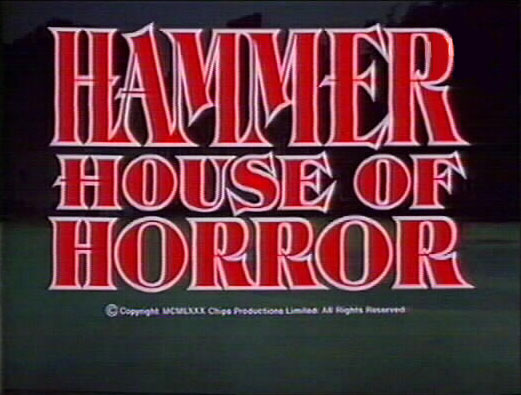
I first encountered this Hammer House of Horror at the meetings they held before the legendary Dead By Dawn all-night speedcore parties in South London. These parties attracted a diverse range of people, and over a two and a half year period the starting points for these assemblies could range from discussions about media pranks against the literary establishment, investigations into self-published print creations, what sex will be like in an anarchist society, recruitment drives by the Association of Autonomous Astronauts, and a final meeting that sought to expand further the sub-net of activity connected to experimental dance music and these Dead By Dawn events.
But this Hammer House of Horror then mutated into an electronic mailing list. Its participants now describe themselves as "residents" of the Hammer House of Horror, and regard the mailing list as a speculative playground that creates its own mythologies and complex patterns, eventually to transform itself into a self-reflexive perpetuum mobilum. One of the myths of this Hammer House of Horror is that this Hammer House of Horror is but a shadow of a shadow of the real Hammer House of Horror, and that this HHH exists to spread terrifying plots against the real HHH. Those residents who are sufficiently enlightened create anti-HHHs, counter plotting on behalf of the one, true HHH, which may or may not even exist.
It is impossible to fix and define the HHH. The residents constantly change names or deliberately use each others' names; new discussion threads are started that refer to previous postings that may not have been sent, messages are sent that comment on future messages to come, and email is cross-posted from other lists that possibly don't exist. Every few months, in conjunction with appropriate astrological events, usually a full moon, this Hammer House of Horror publishes its own newspaper called "The Hermetic Hammer" that contains text and images remixed from the HHH mailing list and connected web sites. The "Hermetic Hammer" is usually handed out at 3-sided football matches.
Even though the Hammer House of Horror is often accused, even by its own residents, of an "anonymous elitism" that depends on a thorough immersion in hermetic codes for their extraordinary games to be comprehensible to anyone, the Hammer House of Horror is still an inspiration to those searching for ways to go beyond mere polemic against zombiefication and to actively engage with the challenge of transforming the world. Included in the signature to Hammer House of Horror email is the following declaration, "The non-existence of this Hammer House of Horror is guaranteed by a multiplicity of discords, paradoxes and contradictions. Listen carefully to these tangled plots and you may hear a new world."
Psychogeography has emerged as an important anti-zombiefication technique that combines both theory and practice. In recent years, one of the principal psychogeographical tourist agents has been the London Spy. The London Spy organises regular trips, or tours, to notable locations that are able to reveal important information about the historical development of Zombie Culture. The London Spy uses the technique of drifting around these sites, seeking to discover hitherto unknown clues, piecing together fragments of observations and exploring psychic ambiences.
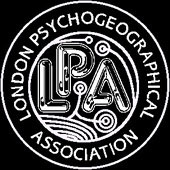 However,
unlike the tourist industry, which is surely one of the principle bastions of
Zombie Culture, Psychogeographical tourism is concerned with reclaiming 'free'
time. Richard Essex, a member of the non-existent but highly influential London
Psychogeographical Association, offers the following as an analysis of this
activity:
However,
unlike the tourist industry, which is surely one of the principle bastions of
Zombie Culture, Psychogeographical tourism is concerned with reclaiming 'free'
time. Richard Essex, a member of the non-existent but highly influential London
Psychogeographical Association, offers the following as an analysis of this
activity:
"By suspending the "common sense" as we move from location to location in our daily life, we can rediscover the wilderness within the city. By exploring those areas we have no good reason to be in, we can discover the reasons we are constrained to certain areas.
"But this layer of psychogeographical activity soon reveals other layers. Questions of gender, of race, of access for people with disabilities soon arise. Any specific locality does not have a unique character. It is not just that a woman may relate differently to a place than a man, but that a woman's presence (or even the presence of a horde of women) can transform that place. Normality no longer functions as a global variable, it can only exist as the production of the functioning of a particular power at a particular place...
"Psychogeography...is a tool of class struggle. When kids from council estates wander into posh housing areas they are immediately harassed by the police...(The police) only accept conventional explanations in terms of economic activity. Psychogeography is always an uneconomic, even anti-economic, activity."
The final anti-zombiefication technique that I will look at is called the funk theme (also referred to as 'the funk'). When I refer to the funk I'm actually indicating the way certain cultural activities can harness this technique to nullify the effects of Zombie Culture. However, it is in the very nature of a funk theme to resist elucidation by language; in other words, as soon as you try to explain how to do it, it just stops working. So we will have to concentrate on what exactly it is that can make the funk a threat to Zombie Culture, and how this manifests itself.
Funk themes can occur in any form of creative expression, but it is in the realm of music that they find their most potent use, and where all the elements for an effective funk theme find their best expression. Let's look at these elements in turn, and also reflect on how the funk continues to successfully mutate itself in order to resist Zombie Culture.
The first element to consider is the way the funk destroys the split between producer and consumer. For example, when dancers (or listeners) are completely immersed in a funk energy burn-out there is no distinction to be made between product and consumer. Each side is entangled in the other in a series of endless relays and recombinations. The funk is never part of a finished product, it is being constantly recreated and reinterpreted (this fact is also in evidence in much present-day dance music that is almost entirely sample-based; a dynamic cross-fertilisation and hybridisation is happening that creates a music that is endlessly re-mixed in the minds of both the producers and the listeners).
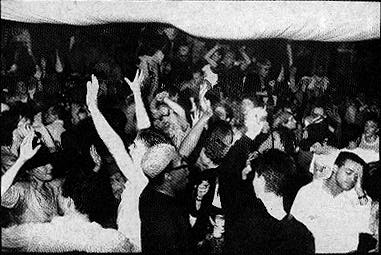 Secondly,
the funk can dissolve individual identity. The funk opens up the psyche to possession
by others, even more so in terms of the collective nature of musical production,
the way that music is able to trace its influences in several directions at
once, not just historically but also in terms of the social networks that have
given inspiration to it. Multiple identities feed into the production and consumption
of music. Belief in the sanctity of individual identity actually bolsters Zombie
Culture by making us adopt fixed patterns of behaviour and thought. The funk
can destroy this zombiefication process by eroding personal identity through
attacks on the zombie mind/body split. Music can overcome the repression of
body intelligences by Zombie Culture, intelligences that when activated by the
funk on enough occasions will eventually lead to a relaxed and understanding
attitude towards the millions of diverse and contradictory personalities that
live inside each and every one of us.
Secondly,
the funk can dissolve individual identity. The funk opens up the psyche to possession
by others, even more so in terms of the collective nature of musical production,
the way that music is able to trace its influences in several directions at
once, not just historically but also in terms of the social networks that have
given inspiration to it. Multiple identities feed into the production and consumption
of music. Belief in the sanctity of individual identity actually bolsters Zombie
Culture by making us adopt fixed patterns of behaviour and thought. The funk
can destroy this zombiefication process by eroding personal identity through
attacks on the zombie mind/body split. Music can overcome the repression of
body intelligences by Zombie Culture, intelligences that when activated by the
funk on enough occasions will eventually lead to a relaxed and understanding
attitude towards the millions of diverse and contradictory personalities that
live inside each and every one of us.
Finally, the funk expresses a desire for psychic spaces that have not been colonised by Zombie Culture. This creates a confidence and power that has an effect in other areas; a desire for transversality, for movement and change in other domains. The funk can take everyday experience and invest it with marvelous possibilities, creating intense moments where the deadening force of Zombie Culture is breached.
The funk is essentially a way of reclaiming
power against the Vampire Management, and this power should not be interpreted
simply as an escape from everyday routines. To regard the funk in this way is
to refuse that realities can exist beyond words. The funk operates at a level
beyond verbal comprehension. The funk just makes you feel good - you know, something
like that top-of-the-head-across-the-shoulders-right-down-tthe-back-of-the-spine
noise/feeling that cannot be put into words. And does not need to be put into
words.
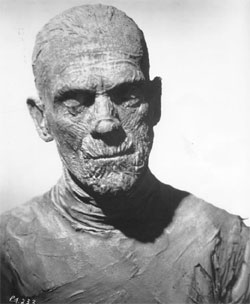
By way of a conclusion I want to return to something that I said at the beginning. I stated that Zombie Culture reproduces itself in the actual processes of our minds. This can only happen when the space between perception and conception, what we perceive and the interpretation of our perceptions, is not continually re-examined. All these anti-zombiefication techniques aim at questioning pre-conceived ideas.
Collective Phantoms discard individual identities and use multiple imaginations to fabricate and disseminate cultural projects.
Media Invasions use the power we have to reverse the zombiefiecation function of the various media machines.
Speculative Playgrounds create spaces for important epistemological games.
Psychogeographical Tours reclaim the 'free' time that is stolen from us by the work and consume routines of Zombie Culture.
And finally, the experience of Funk Themes, like listening and dancing to music, operates beyond verbal comprehension, and therefore eluding capture by the manipulations of Zombie Culture.
I first came across the collective phantom and speculative playground terminology on the Invisible College mailing list. The descriptions used here owe much to postings made by Florian Cramer and Fabrizio P. Bellatia. Media invasion techniques have been based on the continuing efforts of the Association of Autonomous Astronauts, in particular work done in this area by Konrad Becker and Marie Ringler at Vienna/Public Netbase, John Eden of Raido AAA, and Riccardo Balli at AAA Bologna. The theoretical basis to the notion of psychogeographical tours is entirely indebted to Richard Essex of the London Psychogeographical Association. The elements to funk themes discussed here have been inspired by the writings of Howard Slater @ break/flow, Ian Trowell @ Autotoxicity, and ongoing discussions with DJs Christoph @ Praxis records and Toby (DJ Scud) @ Ambush.